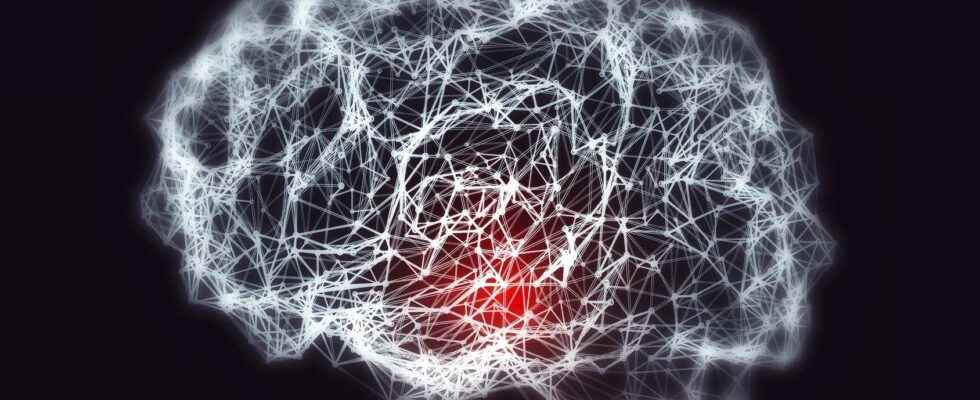You will also be interested
[EN VIDÉO] Soon a blood test to detect Alzheimer’s disease? A blood test to detect Alzheimer’s disease that could be done at your doctor’s office would soon be possible.
In 2019, neuroscientists at the University of Kentucky in the United States discovered a form of dementia dubbed “Late” (for Limbic-predominant Age-related TDP-43 Encephalopathy). The symptoms are close to those of Alzheimer’s diseasebut their origin is different and still unknown. An accumulation of an abnormal form of the protein TDP-43 inside the cytoplasm of cells in neurons is one of the disease markers. The treatments prescribed to treat Alzheimer’s disease are ineffective in the setting of Late.
A large clinical study has been launched to estimate the prevalence of this disease in the population. Ongoing, it provides its first results : approximately 40% of the elderly present this form of dementiaand more than 50% in those already suffering from Alzheimer’s.
40% of patients studied have this form of dementia
Some 6,000 brains, in biopsy form, data genetic and clinical, were analyzed for this research. The participants were on average 88 years old and came from all over the world. Post-autopsy, 39.4% of patients were affected by Late, regardless of stage; and 54.9% in those who also had Alzheimer’s-like senile plaques. ” Since older ages are when dementia is most common, Late’s results are particularly important. Although there are many differences between the studies that are combined here, from design to methodologies, they reveal the importance of Late and suggest that our findings will be relevant beyond any country or region of the world. », said Carol Brayneprofessor of public health at the University of Cambridge and member of the research team.
The researchers now wish to continue their investigation with cohorts more diverse, including people of Asian and African origin, to verify that certain populations are not more predisposed to the disease.
A new form of dementia that resembles Alzheimer’s
Article of Celine Deluzarchepublished on May 3, 2019
Researchers have just discovered a new form of dementia called “Late” whose symptoms are very similar to those of Alzheimer’s disease but involving a different mechanism. A possible explanation for the failure of all the treatments tried so far to cure the disease.
Many falsely diagnosed Alzheimer’s patients may actually be suffering from a new form of dementia called “Late”, according to an international meta-study published April 30, 2019 in the journal Brain. This disease is very widespread, since it affects more than 25% of people over 85 years old. The researchers thus estimate that its impact would be “ as important as Alzheimer’s in elderly patients.
The TDP-43 protein in question
The symptoms of Late are similar to those of Alzheimer’s, with a memory loss progressively progressing to impairment of all daily activities. However, its evolution would be slower and above all, its mechanism would be completely different: whereas Alzheimer’s disease is linked to buildup of amyloid plaques and tau protein in the brain, Late involves the protein TDP-43 which appears in an abnormal structure during disease. On the other hand, it touches the same parts of the brainextending first to the tonsils, then to theseahorse and finally, to the gyrus frontal medium.
A prevalence 100 times higher than other forms of dementia
According to theWHO, 60% to 70% of dementia cases are attributable to Alzheimer’s. But, according to Peter Nelson, professor at the Sanders-Brown Center at the University of Kentucky and lead author of the study, we tend to associate all dementia a little too quickly with Alzheimer’s. ” There are more than 200 kinds of virus coldsemphasizes the doctor, why should there be only one cause of dementia ? “.
Certain other degenerative diseases are already well known, such as Creutzfeldt-Jakob diseasefrontotemporal dementia (FTD) due to atrophy of the brain, or dementia Lewy body. Late is thought to be a far more common form, with a prevalence 100 times higher than DFTs, the researchers report.
Definitive diagnosis possible only post-mortem
It must be said that the diagnostic dementia, which is defined as a neurological disease characterized by progressive impairment of cognitive abilities, is very difficult to establish. Symptoms vary greatly from one individual to another, with some losing their memory first, others language or orientation.
The disease breaks out more or less early, some being affected from the age of 40, others after the age of 80. the diagnostic definitive can only be established post-mortem by an autopsy of the brain, the doctors are based only on the symptomatic criteria to establish their conclusion.
Finally, the concomitance of neurodegenerative diseases with other age-related problems and more or less rapid progression complicate matters. Brain’s study also indicates that the coexistence of Late and Alzheimer’s is relatively common, with, in this case, an accelerated cognitive decline.
99.6% failure of Alzheimer’s treatments
This discovery raises both hope and new questions. A hope, because that could explain the monumental failure of the therapies against Alzheimer’s tried so far: 99.6% of clinical tests carried out between 2002 and 2012 thus failed according to the counts of the review Nature.
However, many patients who were recruited for these clinical trials could in fact have been affected by Late, which means that the potentially favorable results for Alzheimer’s would have been “diluted” by patients not concerned. But this does not solve the basic problem, which is the difficulty in establishing an appropriate diagnosis.
Even if we discovered a drug effective against Late, how do we know who to prescribe it to? The researchers therefore call for a more precise study of the immunological biomarkers dementia, detectable when the person is still alive.
Interested in what you just read?
